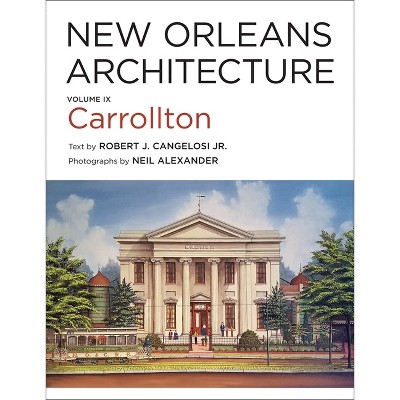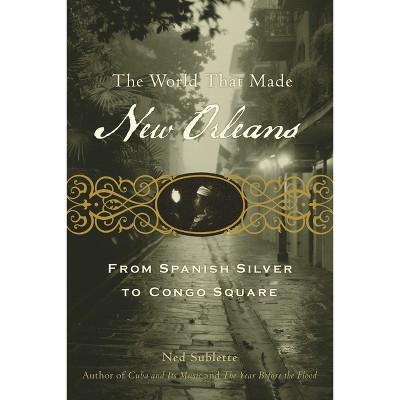Sponsored

Charting the Plantation Landscape from Natchez to New Orleans - (Reading the American Landscape) by Laura Kilcer VanHuss (Hardcover)
In Stock
Sponsored
About this item
Highlights
- Charting the Plantation Landscape from Natchez to New Orleans examines the hidden histories behind one of the nineteenth-century South's most famous maps: Norman's Chart of the Lower Mississippi River, created by surveyor Marie Adrien Persac before the Civil War and used for decades to guide the pilots of river vessels.
- About the Author: Laura Kilcer VanHuss holds a B.A. in English from Hillsdale College and an M.A. in museum studies from Johns Hopkins University.
- 256 Pages
- Architecture, Landscape
- Series Name: Reading the American Landscape
Description
About the Book
"'Charting the plantation landscape from Natchez to New Orleans' examines the hidden histories behind one of the nineteenth-century South's most famous maps: Norman's chart of the Lower Mississippi River, created by surveyor Marie Adrien Persac before the Civil War and used for decades to guide the pilots of river vessels. Beyond its purely cartographic function, Persac's map depicted a world of accomplishment, prosperity, and wealth, while concealing the enslaved and exploited laborers whose work powered the plantations Persac drew. In this collection, contributors from a variety of disciplines consider the histories that Persac's map omitted, exploring plantations not as sites of ease and plenty, but as complex legal, political, and medical landscapes. Essays by Laura Ewen Blokker and Suzanne Turner consider the built and designed landscapes of plantations as they were structured by the logics and logistics of both slavery and the effort to present a faðcade of serenity and wealth. William Horne and Charles D. Chamberlain III delve into the political activity of former slaves and slaveholders respectively, while Christopher Willoughby explores the ways the plantation health system was defined by the agro-industrial environment. Jochen Wierich examines artistic depictions of plantations from the antebellum years through the twentieth century, and Christopher Morris uses the famed Uncle Sam Plantation to explain how plantations have been memorialized, remembered, and preserved. With keen insight into the human cost of the idealized version of the agrarian South depicted in Persac's map, 'Charting the plantation landscape' encourages us to see with new eyes and form new definitions of what constitutes the plantation landscape"--Book Synopsis
Charting the Plantation Landscape from Natchez to New Orleans examines the hidden histories behind one of the nineteenth-century South's most famous maps: Norman's Chart of the Lower Mississippi River, created by surveyor Marie Adrien Persac before the Civil War and used for decades to guide the pilots of river vessels. Beyond its purely cartographic function, Persac's map depicted a world of accomplishment and prosperity, while concealing the enslaved and exploited laborers whose work powered the plantations Persac drew. In this collection, contributors from a variety of disciplines consider the histories that Persac's map omitted, exploring plantations not as sites of ease and plenty, but as complex legal, political, and medical landscapes.
Essays by Laura Ewen Blokker and Suzanne Turner consider the built and designed landscapes of plantations as they were structured by the logics and logistics of both slavery and the effort to present a façade of serenity and wealth. William Horne and Charles D. Chamberlain III delve into the political activity of formerly enslaved people and slaveholders respectively, while Christopher Willoughby explores the ways the plantation health system was defined by the agro-industrial environment. Jochen Wierich examines artistic depictions of plantations from the antebellum years through the twentieth century, and Christopher Morris uses the famed Uncle Sam Plantation to explain how plantations have been memorialized, remembered, and preserved. With keen insight into the human cost of the idealized version of the agrarian South depicted in Persac's map, Charting the Plantation Landscape encourages us to see with new eyes and form new definitions of what constitutes the plantation landscape.About the Author
Laura Kilcer VanHuss holds a B.A. in English from Hillsdale College and an M.A. in museum studies from Johns Hopkins University. For almost a decade, she has served as curator at Oak Alley Foundation, an institution dedicated to the preservation and interpretation of Oak Alley Plantation, a historic site in Vacherie, Louisiana.Shipping details
Return details
Guests also viewed










